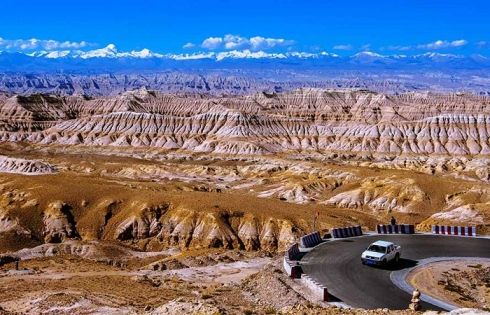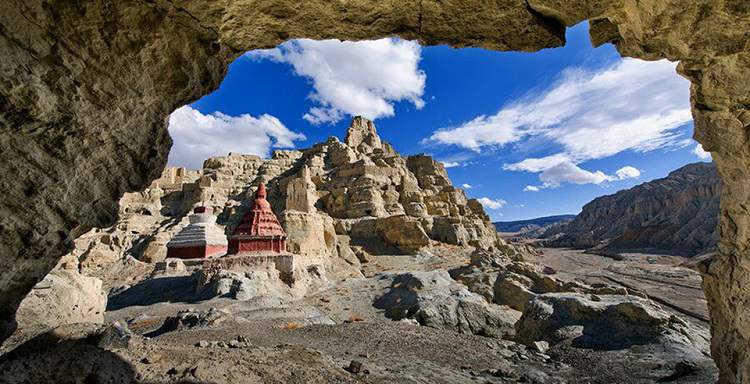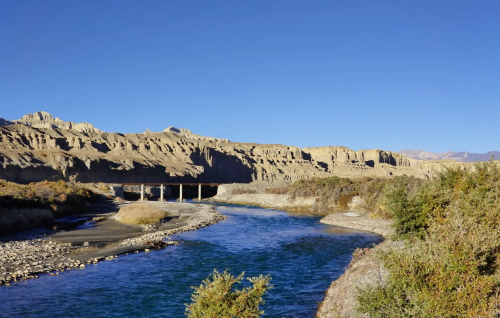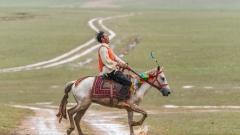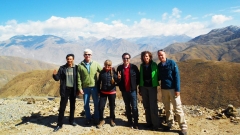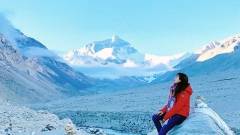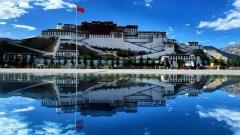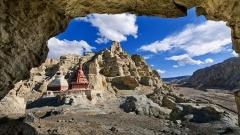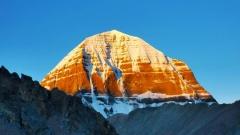Deep within the remote western reaches of Tibet, in the valley of the Xiangquan River in Ngari Prefecture, lies one of the most extraordinary landscapes in Asia—the Zanda Earth Forest. Stretching across hundreds of square kilometers, these dramatic formations resemble rows of towering castles, complete with turrets, walls, and battlements. Shaped by millions of years of geological evolution, the Zanda Earth Forest is both a natural wonder and a cultural treasure. To travelers venturing into Tibet’s far west, it offers an otherworldly experience—standing amidst what feels like an ancient kingdom sculpted entirely by nature.
The Geological Origins of Zanda Earth Forest
The Zanda Earth Forest, also known as Tulin, is a classic example of fluvial-lacustrine deposits carved by erosion. Around 2–3 million years ago, this area was once a vast lake basin. Over time, sedimentation created thick layers of clay, sandstone, and silt. With the retreat of the lake and continuous uplift of the Tibetan Plateau, the terrain was gradually exposed to intense wind and water erosion.
Rainfall, though sparse, cut deep gullies into the soft soil, while wind carried away finer particles. Together, these natural forces sculpted the landscape into natural towers, ridges, and columns. Some formations stretch up to hundreds of meters high, resembling castle walls, cathedral spires, or even the ruins of ancient fortresses.
Why It Looks Like a Natural Castle
Travelers often describe the Zanda Earth Forest as looking like a grand medieval castle complex, and for good reason:
-
Castle-like Towers and Battlements
-
The tall vertical cliffs rise like fortifications, while jagged peaks resemble watchtowers. At sunset, the golden glow of the formations enhances the illusion of an ancient royal stronghold.
-
-
Symmetry and Scale
-
The formations extend for dozens of kilometers, creating a skyline that feels deliberately designed. Valleys and ridges divide the structures like roads and courtyards of a real city.
-
-
Architectural Resemblance
-
Some pinnacles mimic domes or arches, while others form natural “walls.” This uncanny similarity to human architecture is why many call it a “city built by nature.”
-
-
Color and Texture
-
The soil layers display shades of ochre, yellow, and gray, evoking the appearance of weathered stone. From a distance, the colors add to the illusion of ancient ruins.
-
Cultural and Historical Connections
The Zanda region is not only geologically unique but also culturally significant. It was once the seat of the ancient Guge Kingdom, a powerful Tibetan dynasty that flourished between the 10th and 17th centuries.
The Guge Kingdom ruins are located near the Earth Forest, and the resemblance between the natural landscape and man-made fortress architecture often leads travelers to connect the two. Walking through Zanda, one might feel as though the earth itself echoes the grandeur of the lost kingdom.
Local Tibetans consider the Earth Forest a sacred landscape, shaped not just by natural forces but also imbued with spiritual meaning. Many legends describe the formations as frozen battlements of gods or remnants of divine palaces.
Best Viewing Spots
-
Toding Town
-
The administrative center of Zanda County offers a panoramic view of the Earth Forest in the surrounding valleys.
-
-
Guge Kingdom Ruins
-
From the ruins’ high vantage points, visitors can look down at the sprawling earth formations, blending history and geology in one breathtaking scene.
-
-
Xiangquan River Valley
-
Following the river provides close-up views of the eroded cliffs and deep gorges.
-
-
Sunrise and Sunset Points
-
Early morning light casts a soft glow over the formations, while sunsets paint the earth walls in shades of crimson and gold, enhancing their castle-like appearance.
-
The Traveler’s Experience
Visiting the Zanda Earth Forest is unlike seeing any other natural landscape in Tibet. The remoteness, combined with the surreal scenery, creates a feeling of stepping into another world. Travelers often remark that the silence of the valleys amplifies the grandeur of the formations.
-
Photography: The play of light and shadow makes Zanda a paradise for photographers. Long exposure shots during dusk can capture the ethereal beauty of the formations.
-
Exploration: Many trails weave through the valleys, allowing visitors to wander between towering “walls” and “towers.”
-
Spiritual Atmosphere: Coupled with nearby monasteries and ruins, the Earth Forest gives the impression of walking through both natural and cultural history.
Best Time to Visit
-
May to October is the ideal travel season, with mild temperatures and clearer skies.
-
Winter months can be extremely cold, and some routes may become impassable due to snow.
-
The best light for photography is at sunrise and sunset, when the formations look most castle-like.
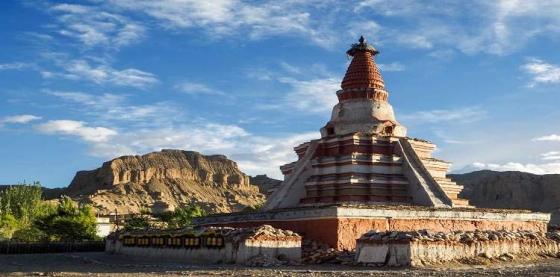
The Stupas of Guge
How to Get There
-
From Lhasa: Travelers usually fly to Ngari Gunsa Airport and then drive to Zanda, a journey of several hours.
-
Overland Routes: Adventurous visitors may include Zanda in longer overland tours of western Tibet, often combined with Mount Kailash and Lake Manasarovar pilgrimages.
Due to its remote location, visiting Zanda often requires joining an organized tour with a Tibetan travel agency that can handle permits, transportation, and accommodation.
Travel Tips
-
Altitude Awareness: Zanda County sits at about 3,700 meters, so acclimatization in Lhasa or Shigatse is recommended.
-
Clothing: Warm layers, sun protection, and sturdy walking shoes are essential.
-
Permits: A Tibet Travel Permit and additional region permits are required, obtainable only through licensed agencies.
-
Accommodation: Basic guesthouses are available in Toding Town, but comfort is limited. Travelers should be prepared for simple facilities.
-
Respect Local Culture: Be mindful when photographing monasteries, locals, or religious ceremonies.
Why Zanda Earth Forest Should Be on Your Tibet Itinerary
The Zanda Earth Forest is not just a geological wonder—it is an experience where nature, history, and spirituality converge. Its castle-like formations transport visitors into an imaginary kingdom of earth and stone, while nearby cultural relics remind them of Tibet’s ancient dynasties.
Unlike Tibet’s more famous destinations such as Lhasa or Everest Base Camp, Zanda offers a rare combination of seclusion, mystery, and raw natural beauty. For travelers seeking to explore beyond the ordinary, this Earth Forest reveals a side of Tibet few ever see.
Conclusion
The Zanda Earth Forest stands as one of Tibet’s most remarkable landscapes, sculpted by time into shapes that resemble a majestic castle. Its towering ridges, cultural connections to the Guge Kingdom, and breathtaking scale make it a destination that feels both ancient and eternal. To journey through Zanda is to step into a natural fortress built not by human hands but by the artistry of earth, wind, and water. For those willing to venture into Tibet’s wild west, the reward is unforgettable—the sight of a natural castle rising from the high plateau.



